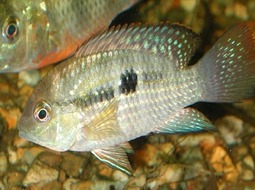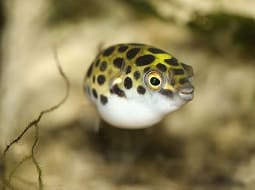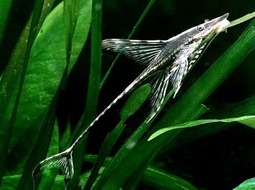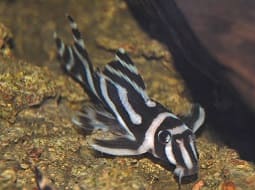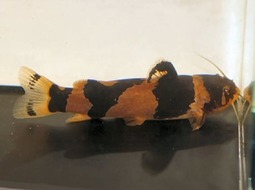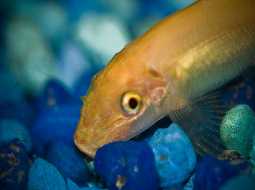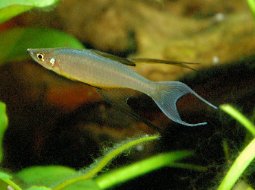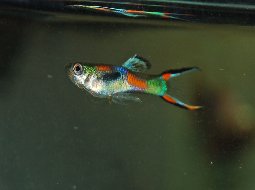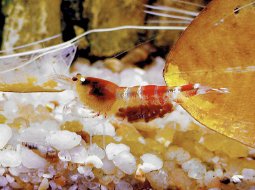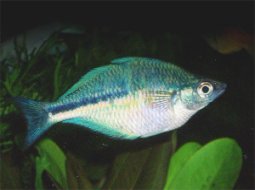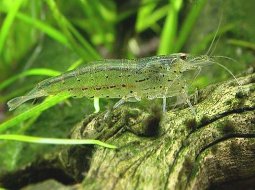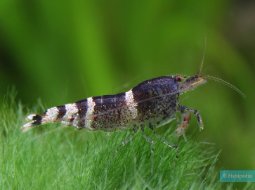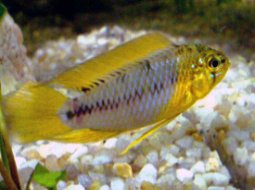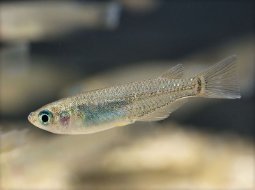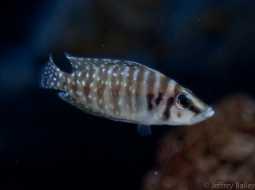
Loading Aqualapp ...
Care and Compatibility of Upside-Down Catfish - Synodontis eupterus
Introduction
The Upside-Down Catfish, scientifically known as Synodontis eupterus, is a medium-sized fish with an elongated and laterally compressed body. Its coloration ranges from brown tones to dark gray, with lighter spots on the abdomen. Its fins are long and pointed, giving it an elegant appearance.
Behavior
The Upside-Down Catfish is a freshwater catfish species that is characterized by its peculiar upside-down swimming behavior. It is a peaceful and nocturnal fish commonly found in rivers and lakes of Africa. Although its appearance may be unusual, it is a unique adaptation that allows it to explore and search for food on the water surface.
Sexual Dimorphism
Sexual dimorphism in Synodontis eupterus is minimal and difficult to distinguish. Both males and females have a similar appearance.
Reproduction
Breeding the Upside-Down Catfish can be challenging in captivity. To stimulate reproduction, it is necessary to recreate the proper water conditions and provide them with hiding places and caves where they can spawn. After spawning, the eggs are guarded by the parents and hatch in approximately one week. The fry are relatively large and can be fed with live or crushed foods.
Aquarium Conditions
Synodontis eupterus, commonly known as the featherfin squeaker, requires a spacious aquarium with plenty of swimming space and hiding spots. It prefers neutral to slightly acidic water. Aquarium décor should include driftwood, caves, and refuge areas. Maintaining water quality is crucial and providing a varied diet.
Feeding
This fish is omnivorous and feeds on a variety of foods, including small aquatic invertebrates, insect larvae, algae, and leftover food. It is important to provide them with a balanced diet that includes live foods such as worms and shrimp, as well as dry and vegetable-based foods to ensure their proper development and health.
Complexity
Caring for Synodontis eupterus can be moderately challenging. They are peaceful and active fish that adapt well to a variety of water conditions. However, they are sensitive to water quality and may require frequent maintenance. They are omnivorous and need a balanced diet that includes both plant-based and protein-rich foods.
In case you need more help, or if you want to know into any topic related to the Synodontis eupterus (Upside-Down Catfish) and even any other species you can use the forums to ask what you need.
To do an analysis more detailed about coexistence and behavior of Synodontis eupterus (Upside-Down Catfish) use the Aquarium simulation tool, if you do this you can test different ways to combine the Upside-Down Catfish with other fishes giving the dimensions and space on you aquarium, on this way you can known the optimal configuration for keep the fishes that you want.
You can also find out the 101 species compatible with the Synodontis eupterus (Upside-Down Catfish) can live together.
Note: The parameters of the water such as PH and temperature are also used to calculate the compatibility of the species.
Compatible species (101)
Compatible (10 Species)
Compatible without any restriction
Similar Sizes (3 Species)
They can coexist if they are the same size or very similar sizes, it does not work in all cases, there may be exceptions.
With Reservation (44 Species)
Compatible in some cases, it depends on the nature and personality of the fish.
Las especies territoriales por lo general pueden convivir con especies protegidas con coraza, ya que no pueden hacerles daño por su dura piel, lo que si hay que tener en cuenta es tener un acuario con dimensiones favorables para que cada pez pueda delimitar un territorio, ya que la mayoría de peces acorazados son también peces de fondo y les gusta estar buscando lugares donde ocultarse.
Showdown over territory (21 Species)
Fish can live together as long as the space is spacious enough to delimit a territory, otherwise there may be aggressions for competing for the territory.
Como a estos peces les gusta estar refugiados en diferentes ubicaciones del acuario ya sean en plantas, troncos, rocas etc, si otro pez intenta entrar donde está escondido podrían haber confrontaciones por ese refugio.
Considerable size difference (21 Species)
They can coexist while they are similar in size or the size difference is not very abysmal, since as the fish grows it increases the chances of eating its partner that did not grow much.
Compatible if space is enough (2 Species)
Puede convivir con otros de su especie, siempre y cuando e respete su espacio y cada ejemplar cuente con su propio refugio o territorio.
They can coexist together if the aquarium they share is large and spacious enough for both species to feel good, as some fish may attack others to feel that they have little space and try to eliminate the competition.
Upside-Down Catfish
Synodontis eupterus
- Ph: 6.8 - 7.9
- Temperature (c°): 23 - 28
- Measures: 15 cm - 18cm
- Aquarium Capacity:
90 Liters - 24 Gallons - Alimentación: Carnivores, Omnivores
- Colores: Black, White
- Comportamiento: Active, Likes to take refuge, Peaceful
- Habitad: African
- Morfología: Thorns or pointed
- Preferencias del Acuario: Caves, Logs, Natural plants, Rocks, Sand
- Tamaño: Medium
- Taxonomía: Fish
- Tipo de Agua: Sweet water, Tropical waters
- Velocidad de nado o movimiento: Normal
- Zona de Nado: Aquarium background

.jpg)
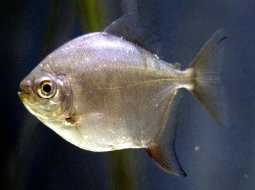
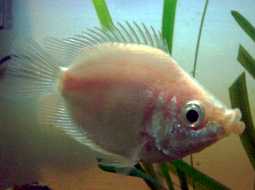
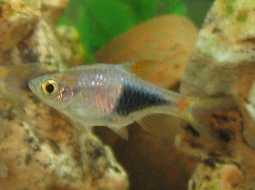
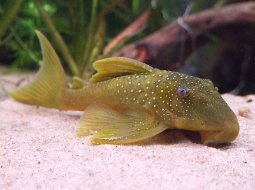



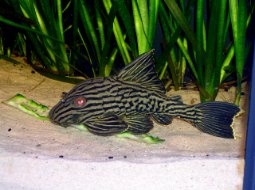

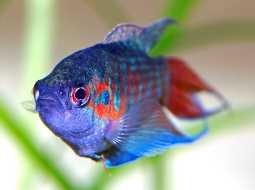

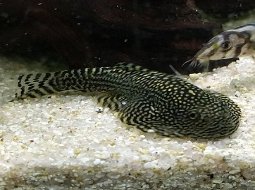








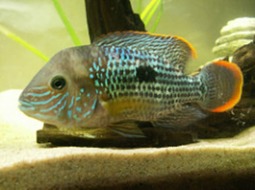

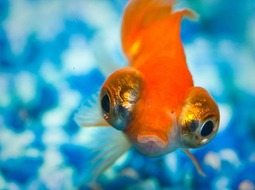



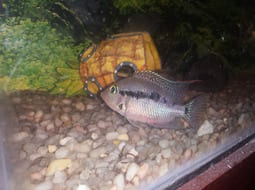


.jpg)
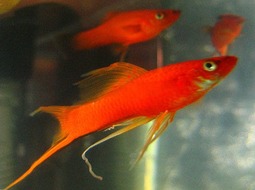
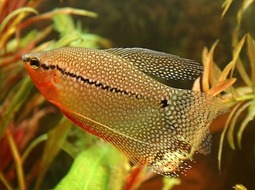
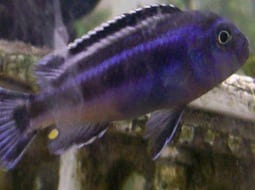




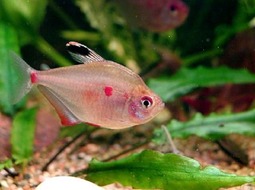


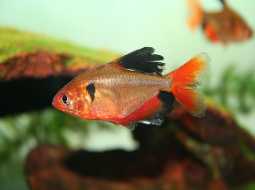
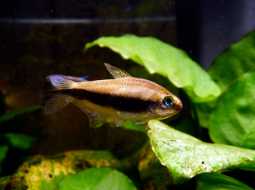
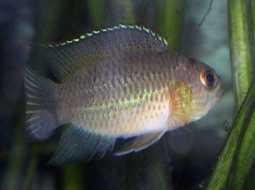
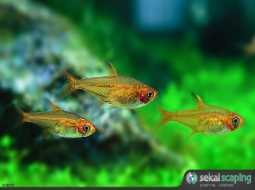
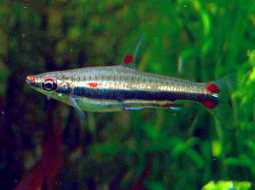
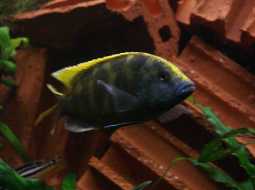
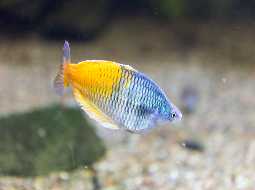
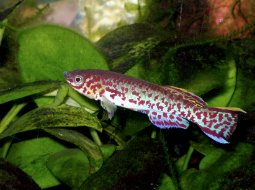

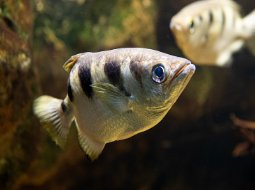
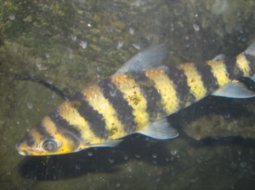
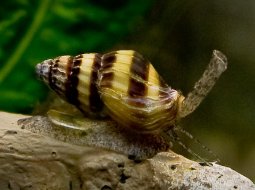








.jpg)
